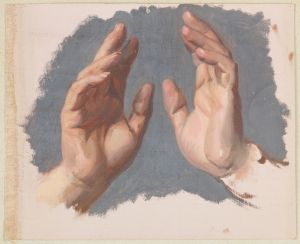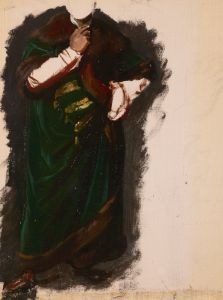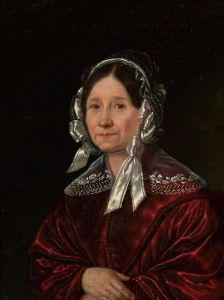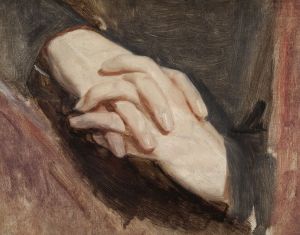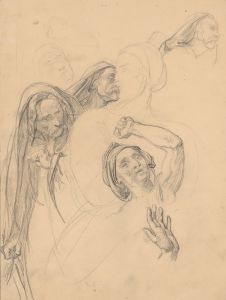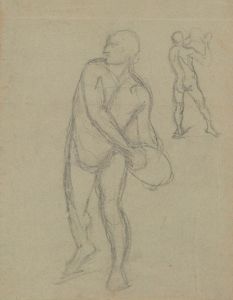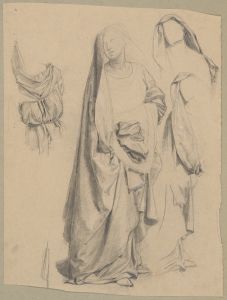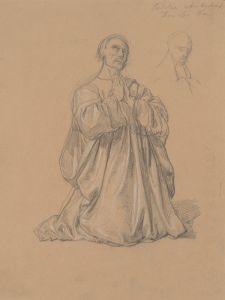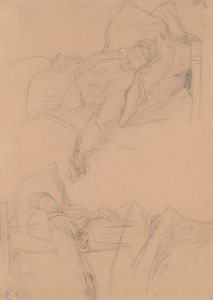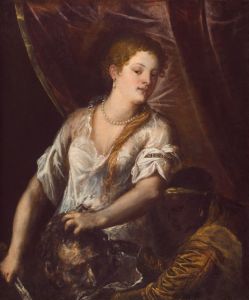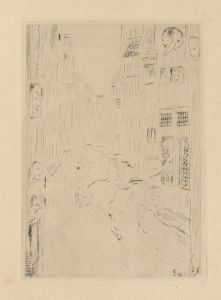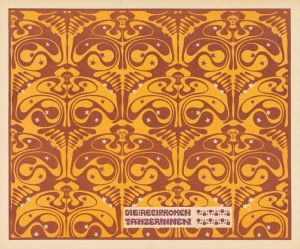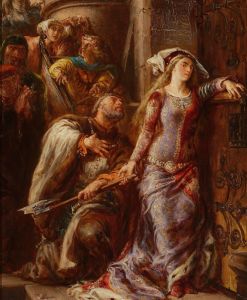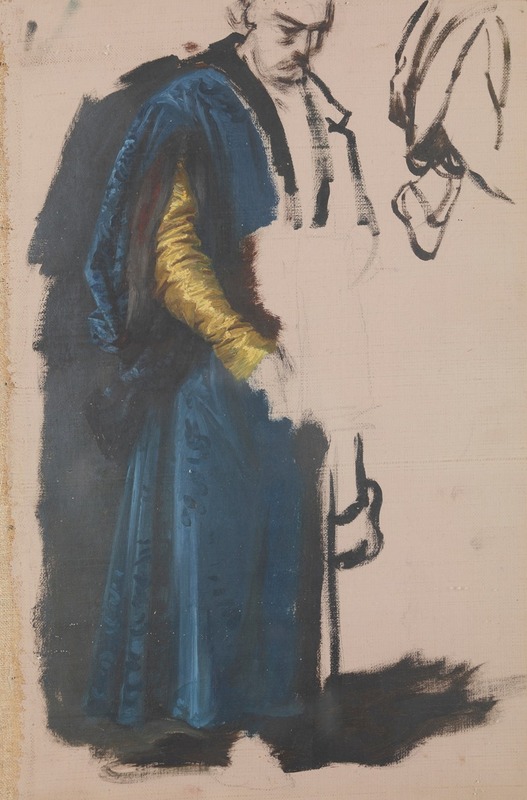
Jaśko of Tenczyn. Study to the Painting ‘The Oath of Queen Jadwiga’
A hand-painted replica of Józef Simmler’s masterpiece Jaśko of Tenczyn. Study to the Painting ‘The Oath of Queen Jadwiga’, meticulously crafted by professional artists to capture the true essence of the original. Each piece is created with museum-quality canvas and rare mineral pigments, carefully painted by experienced artists with delicate brushstrokes and rich, layered colors to perfectly recreate the texture of the original artwork. Unlike machine-printed reproductions, this hand-painted version brings the painting to life, infused with the artist’s emotions and skill in every stroke. Whether for personal collection or home decoration, it instantly elevates the artistic atmosphere of any space.
Jaśko of Tenczyn is a historical figure depicted in the painting The Oath of Queen Jadwiga by Polish artist Józef Simmler. The painting, completed in 1867, is one of Simmler’s most notable works and is celebrated for its historical and emotional depth. It portrays a significant moment in Polish history, focusing on Queen Jadwiga of Poland, who reigned in the late 14th century. The artwork captures the solemnity of an oath-taking ceremony, symbolizing the queen’s dedication to her duties and the unity of the Polish-Lithuanian state.
Jaśko of Tenczyn, also known as Jan of Tęczyn, was a Polish nobleman from the influential Tęczyński family. He served as a castellan of Kraków and was a prominent figure in the political landscape of medieval Poland. In the painting, Jaśko is depicted as one of the key witnesses to Queen Jadwiga’s oath, emphasizing his role as a trusted advisor and a representative of the Polish nobility. His presence in the artwork underscores the importance of the nobility in supporting the monarchy and maintaining the stability of the kingdom.
The painting itself is a fine example of 19th-century historical realism, a style that Simmler mastered. The artist paid meticulous attention to historical accuracy in the costumes, architecture, and ceremonial details, reflecting the period’s reverence for Poland’s medieval past. Simmler’s use of light and composition draws the viewer’s attention to Queen Jadwiga, who is the central figure in the scene. Her expression conveys a sense of solemnity and resolve, capturing the weight of her responsibilities as a ruler.
Queen Jadwiga, canonized as a saint by the Catholic Church in 1997, is remembered for her piety, intelligence, and political acumen. Her reign marked a pivotal moment in Polish history, particularly her role in the union of Poland and Lithuania through her marriage to Jogaila (Władysław II Jagiełło). This union laid the foundation for the Polish-Lithuanian Commonwealth, one of the most powerful states in Europe during its time.
While the painting is a work of art rather than a literal historical record, it serves as a visual representation of the values and ideals associated with Queen Jadwiga’s reign. Jaśko of Tenczyn’s inclusion in the scene highlights his historical significance and his connection to the events of the period. Today, The Oath of Queen Jadwiga remains an important cultural artifact, reflecting both Poland’s medieval heritage and the 19th-century Romantic movement’s fascination with national history.





